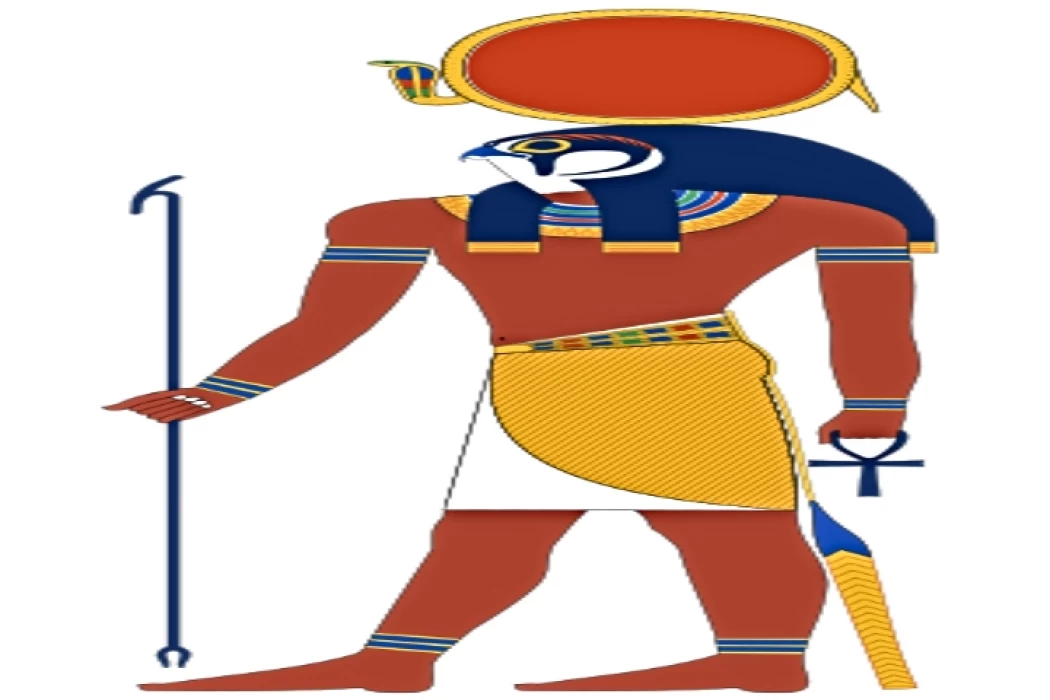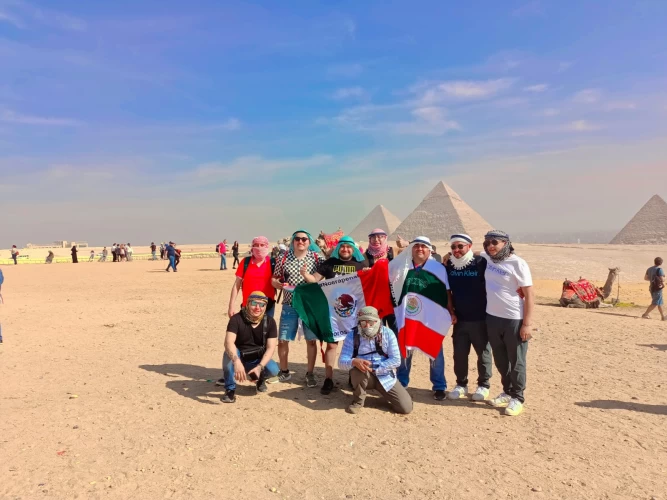
The story of the god Re-Hor-Achti
The ancient Egyptians were interested in sanctifying a number of ancient Egyptian deities. The Egyptian gods were a symbol of protection, goodness, and others, and a representation of natural and social phenomena. The ancient Egyptian civilization was rich in a huge number of gods, as the ancient Egyptians recorded their description on the walls of temples and tombs.
"Ra Hor akhti" is one of the gods of ancient Egypt. TheThe pantheon of ancient Egyptian deities fused Ra as the sun disk and Horus as the falcon. According to the ancient Egyptians’ beliefs, the sun was the giver of life and was worshipped as a god named Ra.
According to the Museums Department, this belief was particularly widespread in northern Egypt, where the city of On (Heliopolis) was located, and in the south the worship of Horus spread, then after the union of the northern and southern faces, the god of the north and the south was united in the image of Ra-Horakhty.
The ancient Egyptians also used the word akhet, traditionally translated as "horizon," to refer to the two distant, mysterious places where the sun god rose and set daily, and where he was also eternally reborn in the afterlife. If you are a fan of visiting Egyptian museums, to learn about the life in ancient Egypt, you can visit the Kafr El-Sheikh Museum, where it displays a collection of distinguished artifacts, the most prominent of which is a statue that is a representation of the god of reconciliation who combines Ra and the god Horus, with the name of the deity "Ra Hor Akhty", which means Ra Horus from between the two horizons.
The university Kafr El-Sheikh is near to the museum. The building consists of several halls for museum exhibitions, halls for visual preparation, museum education and seminars, in addition to a service building containing a group of cafeterias and bazaars. The museum's display scenario revolves around a main theme, which is the myth of Isis and Osiris and the conflict between Horus and Set, in addition to shedding light on a group of topics such as: the history of the ancient city of Buto, one of the ancient Egyptian capitals.
Latest Articles
Admin
Aswan Governerate in Egypt
One of Egypt's southern governorates is Aswan Governorate. The city of Aswan serves as its capital. At a latitude of 22 north of the equator (also known as the Tropic of Cancer), it is bounded to the north by the Qena Governorate, to the east by the Red Sea Governorate, to the west by the New Valley Governorate, and to the south by the Republic of Sudan.
Admin
Luxor Governorate Egypt
The capital of the Arab Republic of Egypt is Luxor City, which was once known as "Thebes City" because it served as Egypt's capital during the Pharaonic era. It is situated in the South Upper Egypt region, approximately 670 kilometers from the capital Cairo from the south. It is bordered on the north by Qena Governorate, on the south by Aswan Governorate, on the east by Red Sea Governorate, and on the west by New Valley Governorate.
Admin
History of kafr El Sheikh Governorate
Kafr El Sheikh Governorate is an Egyptian governorate, located in the northernmost part of Egypt in the Nile Delta, with Kafr El Sheikh as its capital. It had a population of 3,172,753 in 2015 and an area of 3,748 km². Its entire area is located north of the delta and overlooks the Mediterranean Sea. The main economic activity of the residents of the governorate is agriculture and fishing, especially the southern lands of the governorate and the lands overlooking the Nile River - Rosetta Branch.
Admin
Egypt's New Administrative Capital
The New Administrative Capital is located between the Cairo-Suez and Cairo-Ain Sokhna roads, 60 km from Cairo and the same distance from Ain Sokhna and Suez. The New Administrative Capital is located on the border of Badr City, in the area between the Cairo-Suez and Cairo-Ain Sokhna roads, just after New Cairo, Mostakbal City and Madinaty.
Admin
Al Gharbia Governorate
Gharbia Governorate is one of the governorates full of archaeological sites, whether they are places or facilities (mosques, churches), as the governorate is a destination for visitors to these places throughout the year, whether they are Egyptians from the different governorates.
Admin
Hamata Islands (Qulaan Archipelago) in Marsa Alam
The Hamata area, south of Marsa Alam in the Red Sea, is one of the most important parts of the Wadi El Gemal Reserve, whether in the desert or the sea. It was named after the sorrel plant, which was distorted to Hamata.














